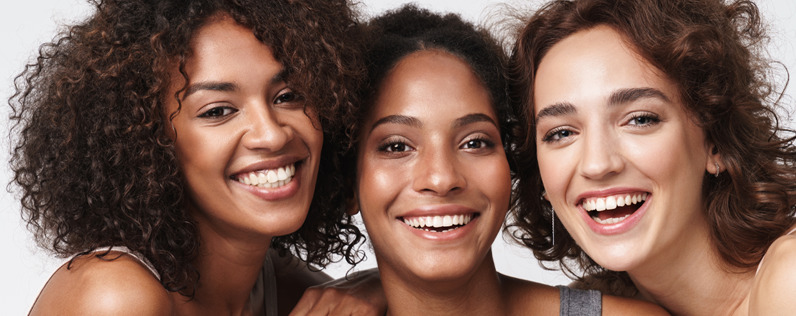
With the beauty industry generating nearly $50 billion in the US in 2020, beauty products and services seem likely to continue thriving in the coming years. Just as beauty trends are always changing, marketing in the beauty industry is in a constant state of flux.
This article covers the following five emerging marketing trends in the beauty industry:
- Embracing natural beauty
- Diversifying marketing in the beauty industry
- Selling customizable beauty
- Partnering with influencers
- Celebrating sustainable and clean products
We make it easy to get new clients and repeat business with all the marketing tools you need for your nails, hair, skin, or personal care business.
1. Embracing natural beauty
One of the most prevalent trends in the beauty industry is embracing authenticity. After a pushback against over-processed images, the beauty industry has largely pivoted to embrace a broader ideal of beauty and celebrate real people in its marketing campaigns. Many brands have followed this trend by adopting the strategies detailed below.
Eliminating Photoshop
Most brands have not banned Photoshop outright. However, minimal retouching is growing in popularity. It is not uncommon to see stretch marks, scars, body hair, and natural-looking bodies in modern beauty brand imagery.
SPKTRM Beauty prides itself on being the first brand to completely ban Photoshop in its imagery. You may notice that SPKTRM’s Instagram feed features close-up images that celebrate its models’ natural beauty. Uplifting statements of beauty and newly launched products can also be seen.
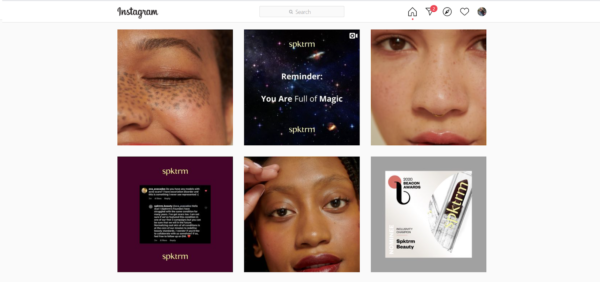
Choosing more casual imagery
Riding the wave of authentic beauty, many brands are now using natural-looking photos. These photos look more like at-home photo sessions than the studio sessions many consumers have come to expect. Many promotional images still feature models. However, the toned-down aesthetic helps consumers envision themselves using the products more easily than a high-fashion advertisement might.
In the example below, beauty pioneer Fenty Beauty features model Connie Lee in a casual setting. The current trend sees more and more beauty looks geared toward daytime and at-home styles.
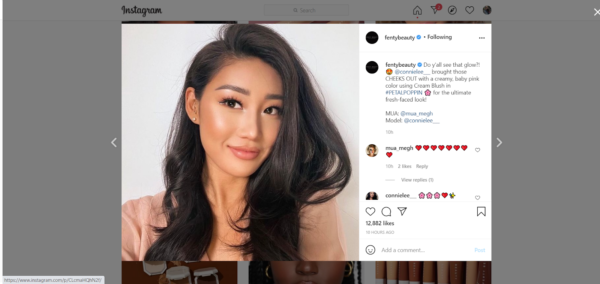
No-makeup makeup
The no-makeup makeup trend has recently enjoyed a meteoric rise in the beauty industry. Ushered in by a call for more authentic beauty, brands like True Botanicals and Bare Minerals now center their marketing on elevating consumers’ natural beauty.
One of the most popular examples of a brand following the no-makeup makeup trend is Glossier. This company’s Instagram feed is filled with fresh-faced individuals flaunting a subtle glow.
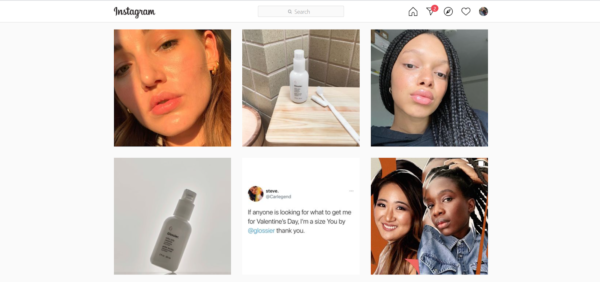
2. Diversifying marketing in the beauty industry
Perhaps the most important current trend of marketing in the beauty industry is a much-needed increase in the diversity of both models and products. From hair care to skincare, beauty companies are busy diversifying their brands to meet the needs of the modern consumer. Key changes include those detailed below.
More inclusive products
In recent years, many beauty brands have stepped up their game to provide products and services that care for all skin tones and hair textures. For example, Fenty Beauty has been instrumental in pushing the industry to provide a wider range of makeup shades and quality products for all.
However, Fenty is not the only brand at the forefront of this effort. Milk Makeup is another notable makeup brand that has changed the standards of the beauty industry. Haircare brand Function of Beauty has followed suit by introducing a wider range of customizable products for all hair textures.
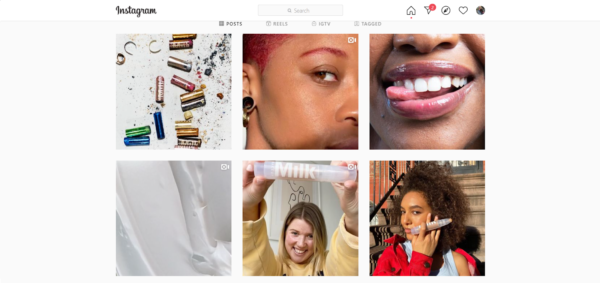
More inclusive imagery
Along with offering more comprehensive products, the beauty industry has also changed its imagery. More and more brands are now promoting diversity in their marketing campaigns, with emphasis on greater diversity in gender, race, body type, culture, and lifestyle. A quick scroll through Fenty Beauty’s Instagram feed reveals an array of faces representing its products.
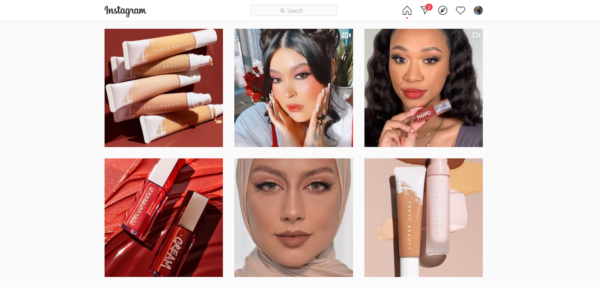
Billie Inc. is another notable brand that features a wide range of faces in its marketing.
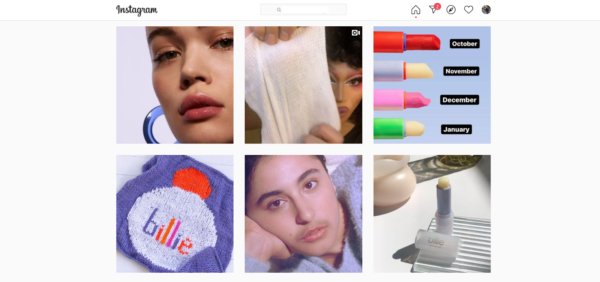
3. Selling customizable beauty
Modern consumers enjoy products that have been created specifically to meet their individual needs. Customizable beauty appeals to the buyer’s sense of individuality. The idea of customizable beauty often leads to marketing that highlights personalization.
In each of the examples of customizable beauty detailed below, the consumer receives a product with their name on the bottle. Who wouldn’t love that?
Prose
Prose is a haircare brand that produces customized sets for its customers. Prose’s values center on the idea that “one size fits none.” The company’s branding features clever language that highlights the special nature of its products. Examples include “one-in-a-million” and always referring to the customer as “you.”
Such language is a common strategy for marketing in the beauty industry. However, it is especially effective when paired with a product that is tailored to the buyer.
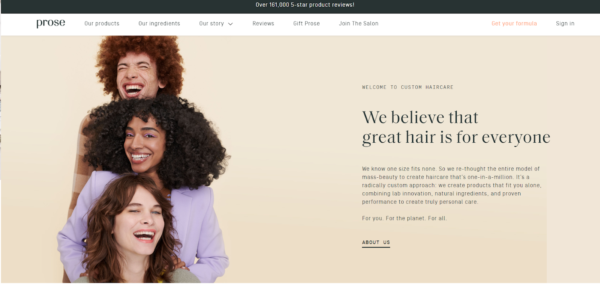
Function of Beauty
Function of Beauty’s mission is similar to Prose’s: customized hair care for all hair types. In recent times, Function of Beauty has expanded its business model to include fragrances and skincare, both of which are completely customizable.
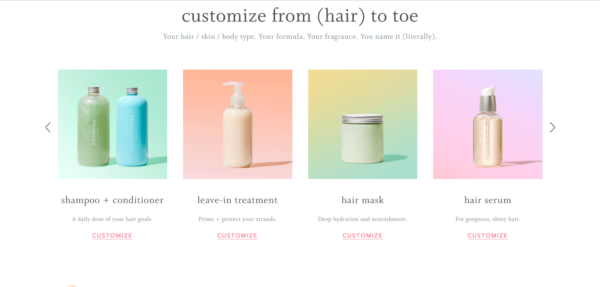
Curology
Curology is a skincare brand that focuses on meeting consumers’ individual skin care needs. There are many ways to promote skincare products, but Curology’s marketing efforts center on eliminating skin problems so that customers can focus on what makes them unique.
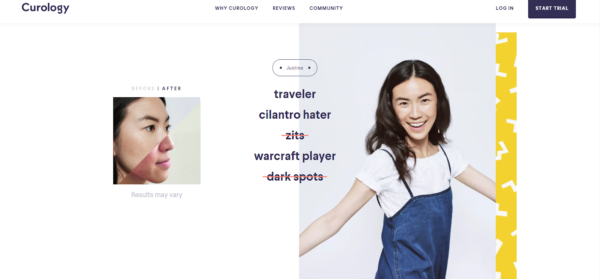
4. Partnering with influencers
In recent times, the beauty industry has enjoyed rapid growth. This growth is partly the result of a major influx of social media influencers on platforms like Facebook, Instagram, YouTube, and TikTok.
It is estimated that by 2022, brands will spend up to $15 million on their influencer programs, and for good reason. Influencers have harnessed the power of social media marketing in the beauty industry to the great benefit of their affiliated brands.
Many beauty influencers spend years cultivating a following on social media. Their followers seek their recommendations for beauty products and routines. Brands leverage influencers by partnering with social media personalities who endorse their products through a wide range of content. Examples are detailed below.
Sponsored photos
Nyma Tang is a popular influencer who partners with several beauty brands. In the example below, Nyma promotes MAC Cosmetics by tagging MAC’s Instagram account and using the hashtag #MACCrew.
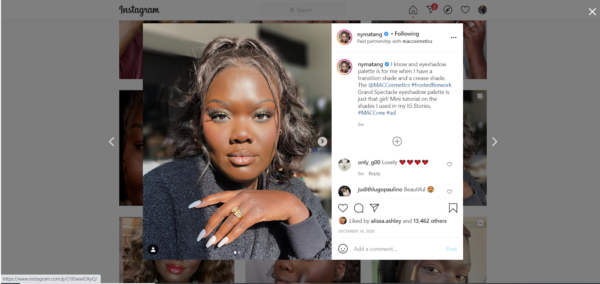
Tutorials and beauty tips
Skincare brand Murad partners with influencer Paola Matute, who promotes the brand by getting “unready” with Murad’s skincare routine. Murad uses Paola’s glow and her following to market its product.
Micro-influencer content
Fenty Beauty often features micro-influencers, which are users who have followings in the low thousands. In the following example, the company features a user who tagged its products. This emerging form of marketing in the beauty industry encourages user engagement and builds lifelong connections with customers.
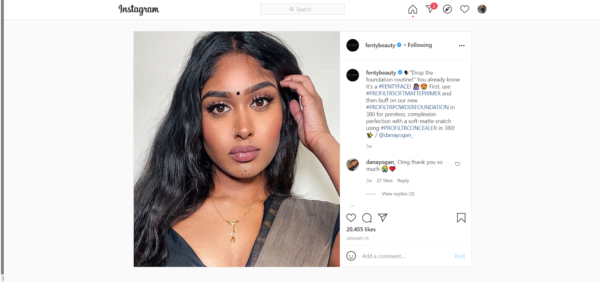
Tagged user-generated content
Brands like OGX market their products by featuring user-generated content on their online beauty stores. This strategy encourages brand engagement and loyalty. In addition, it shows prospective buyers that their products work for real people. OGX utilizes the hashtag #ogxbeauty to track user-generated content for its website.
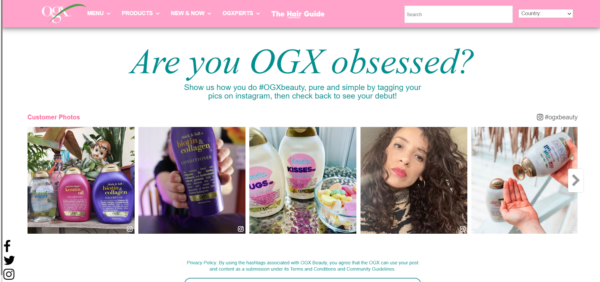
5. Celebrating sustainable and clean products
Moving forward, sustainability will be an important part of nearly every industry, including the beauty industry. Many brands are already making the switch to more sustainable and eco-conscious packaging, production processes, and products. Clean products — those made without harmful chemicals — are another aspect of this emerging marketing trend.
Originally a clean baby care brand, Honest Beauty now focuses its marketing efforts on creating clean beauty products with recognizable ingredients.
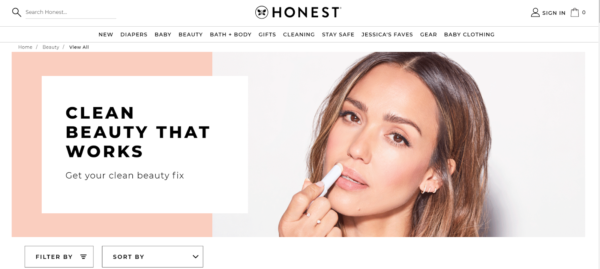
Public Goods, on the other hand, centers its marketing campaign on sustainable products that support the greater good.
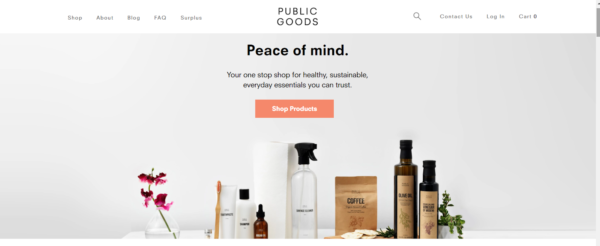
Takeaways
With their social and environmental impact in mind, beauty brands are striving to change for the better. Now that you’ve learned about emerging trends of marketing in the beauty industry, it’s time to apply them to your own business.
From building your own website to launching an email campaign for your salon, many elements make up marketing for personal care services. Read more in The Download, Constant Contact’s free marketing guide for personal care professionals.




